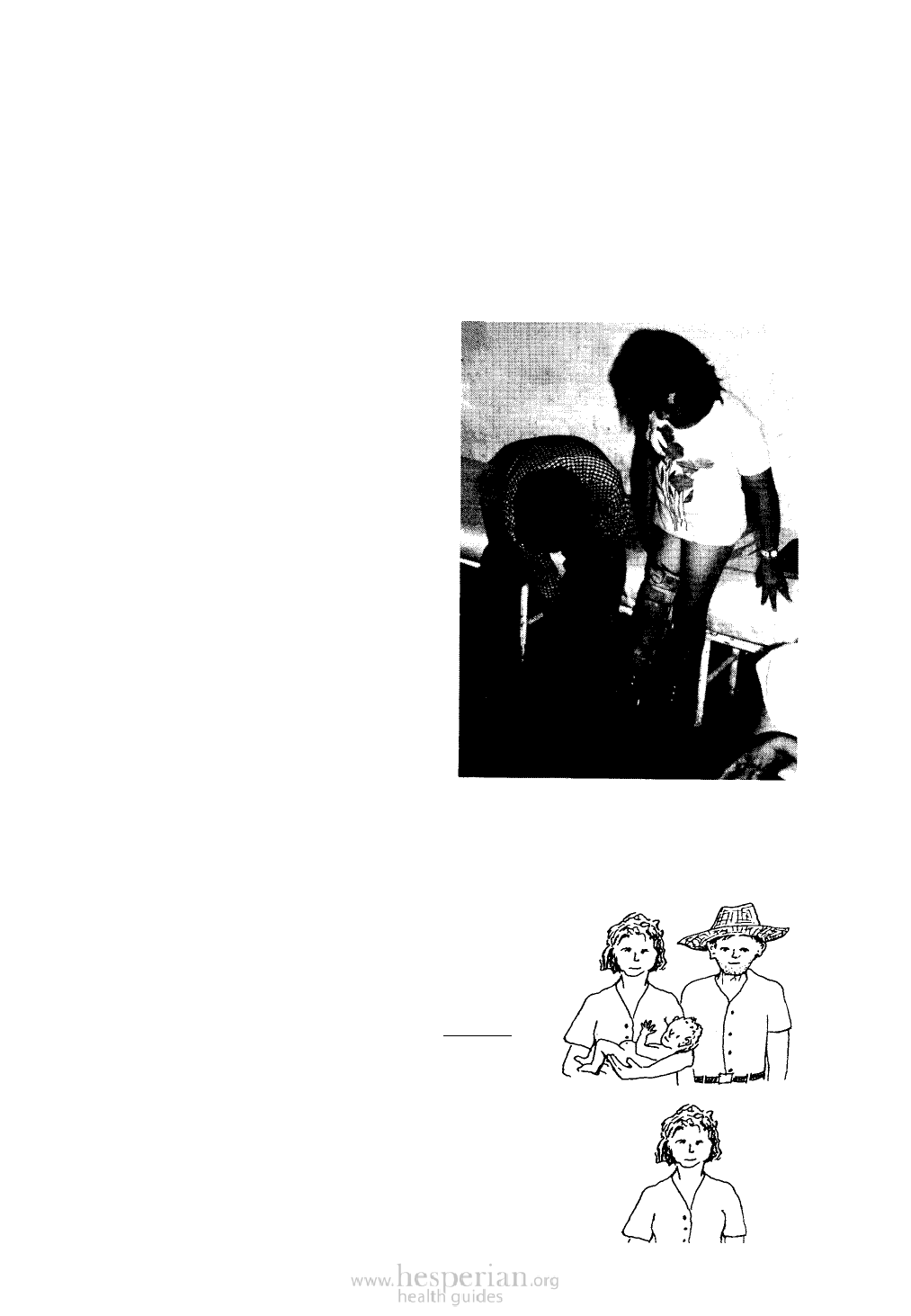
2-5
Joint selection by the community and program leaders
Some programs feel the best selection of health workers results from combining
the community’s knowledge of its people with the program leaders’ experience.
The village is asked to pick 3 or 4 ‘candidates’. From these, the instructors choose the
one they think most suited—perhaps after testing their skills and attitudes.
PEOPLE WITH DISABILITIES AS HEALTH WORKERS
Some programs require that
health workers be in “excellent
physical health.” Clearly, health
workers should be free of contagious
diseases such as untreated
tuberculosis, and healthy enough to
handle their responsibilities.
We have found, however, that
some of the best health workers
are persons with serious physical
disabilities; polio, for instance, or
an amputated arm or leg. Unable
to do hard physical labor, they may
find more time for health work
and greater satisfaction in doing it.
Because of their own problems,
they also have more understanding
for others who are ill or disabled.
In some ways, their weakness
becomes their strength. As health
workers serving their community,
they set an example for others who
are disabled.
People with disabilities often make excellent
health workers. Here a young man, himself
disabled by juvenile arthritis, repairs braces for
a child with polio. (Mexico-Project Piaxtla)
WHO MAKE BETTER HEALTH
WORKERS—MEN OR WOMEN?
Some programs train only men as health
workers. Others only women. Others train both.
Reasons often given for selecting women as
health workers:
• Women and children make up 3/4 of the
population. Their health needs are especially
great. And women usually prefer health
workers who are women.
• Women have more experience in caring for
children, and may be more tender.